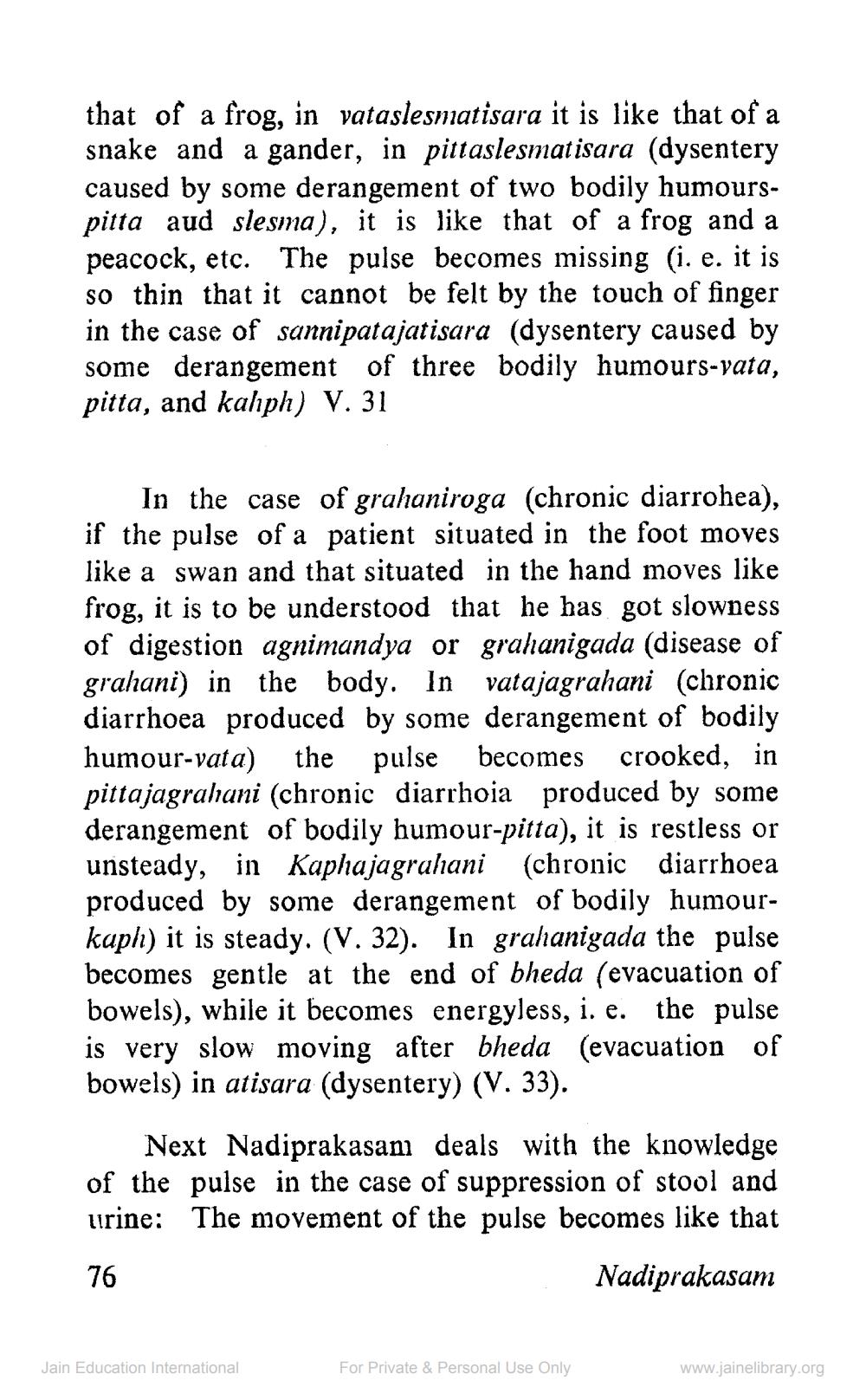________________
that of a frog, in vataslesmatisara it is like that of a snake and a gander, in pittaslesmatisara (dysentery caused by some derangement of two bodily humourspitta aud slesma), it is like that of a frog and a peacock, etc. The pulse becomes missing (i. e. it is so thin that it cannot be felt by the touch of finger in the case of sannipatajatisara (dysentery caused by some derangement of three bodily humours-vata, pitta, and kahph) V. 31
In the case of grahaniroga (chronic diarrohea), if the pulse of a patient situated in the foot moves like a swan and that situated in the hand moves like frog, it is to be understood that he has got slowness of digestion agnimandya or grahanigada (disease of grahani) in the body. In vatajagrahani (chronic diarrhoea produced by some derangement of bodily humour-vata) the pulse becomes crooked, in pittajagrahani (chronic diarrhoia produced by some derangement of bodily humour-pitta), it is restless or unsteady, in Kapha jagrahani (chronic diarrhoea produced by some derangement of bodily humourkaph) it is steady. (V. 32). In grahanigada the pulse becomes gentle at the end of bheda (evacuation of bowels), while it becomes energyless, i. e. the pulse is very slow moving after bheda (evacuation of bowels) in atisara (dysentery) (V. 33).
Next Nadiprakasam deals with the knowledge of the pulse in the case of suppression of stool and urine: The movement of the pulse becomes like that
Nadiprakasam
76
Jain Education International
For Private & Personal Use Only
www.jainelibrary.org




